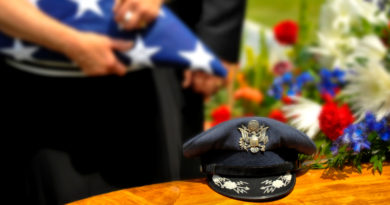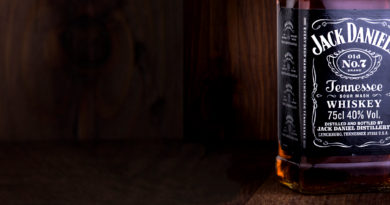The Burial Sites of 10 Famous Animals

thousands of miles apart. Photo © iStock.com/Kanashi
We often wonder what happened to a well-known athlete, film or television star who faded into obscurity, but few of us think about the fate of the animals that managed to become household names. Here you will discover the burial sites and final resting places for 10 of the world’s best-known or beloved animals from movies, T.V., sports and even politics.
Benji
Fans of the 1960s television show Petticoat Junction might remember a loveable mutt known only as “Dog” but might not connect him to the 1974 film that earned him the screen name for which he’s remembered. Rescued from California’s Burbank Animal Shelter in 1960 by animal trainer Frank Inn, Higgins (as the dog was then called) impressed his handler by quickly learning new tricks whenever needed. Thus, when Inn needed a super-smart pooch to star in a new film about a, er… well, a super-smart pooch, he called Higgins out of retirement to film Benji.
Despite training hundreds of animals during his career, this dog carried a special place in his handler’s heart. After Benji/Higgins died in 1978, his trainer cremated the dog and kept the “ashes” in an urn until 2002, when they were buried in Frank Inn’s casket in Forest Lawn Memorial Park, Los Angeles, California.
Checkers
Most U.S. presidents have welcomed a dog as a member of the family during their time in the White House, but few such canines actually saved their owner’s political career. Checkers, a black-and-white cocker spaniel, did just that in 1952 when Richard Nixon found himself embroiled in a campaign-finance scandal that threatened to derail him as the Republican vice presidential candidate.
Appearing on television, Nixon denied any wrongdoing but admitted he did receive a puppy from a supporter and would not give it back because his daughters loved the dog. Now known as the “Checkers speech,” Nixon won election as vice president and later became president in 1968. Unfortunately, the cocker spaniel would never romp around the Oval Office at President Nixon’s feet because Checkers died in 1964 and was buried at the Bide-a-Wee Pet Cemetery in Wantagh, New York.
Flipper
Although several dolphins portrayed the title character in the 1960s television show Flipper, one stands snout-and-tail above the rest — Mitzi, who portrayed Flipper in the original 1963 film of the same name. Trained by Milton Santini, Mitzi/Flipper died in 1972 and was buried on the grounds of the Dolphin Research Center in Grassy Key, Florida. A life-size dolphin statue marks her gravesite with a plaque that reads: “Dedicated to the memory of Mitzi, The original Flipper, 1958-1972.”
Lassie
The uber-intelligent collie first appeared in the 1943 MGM film Lassie Come Home, a film adaptation of the 1940 novel by British author Eric Knight. While numerous dogs portrayed Lassie in later movie sequels, television and radio shows, a collie named Pal played the title role in the first seven films. When the collie died in 1958 at age 18, trainer Rudd Weatherwax buried Pal/Lassie on his ranch in Canyon Country, California.
Interestingly, Pal was not actually the “original” Lassie. That honor belongs instead to a collie named Toots, the dog Eric Knight owned that inspired his original novel, Lassie Come-Home. Toots died in 1945 (two years after Knight died in a plane crash) and the family buried Toots a “considerable distance northeast of the house” on the family’s property, Springhouse Farm, in Bucks County, Pennsylvania. In 1970, a small concrete collie statue was placed on the burial site denoting the dog’s significance.
Man o’ War
Possibly the greatest racehorse ever, Man o’ War holds an honored spot as a member of the National Museum of Racing and Hall of Fame following the horse’s nearly perfect record of 20 of 21 wins in 1919-20. Considered an “equine freight train,” the horse proved more popular than baseball’s Babe Ruth, boxing’s Jack Dempsey and any other (human) athletic superstar of the era. In fact, armed guards, the police and even Pinkerton’s had to protect Man o’ War from bona fide assassination plots and fans seeking to yank a souvenir from the horse’s coat or tail.
After Man o’ War died on November 4, 1947, the horse’s funeral was broadcast on radio, and racetracks across the United States held a moment of silence to mark the occasion. Initially buried on Faraway Farm in Lexington, Kentucky, Man o’ War’s remains were exhumed in the early 1970s and reinterred at Lexington’s Kentucky Horse Park, where a larger-than-life bronze statue marks the horse’s gravesite today.
Mister Ed
Born in 1949 in El Monte, California, this talented palomino starred in one of television’s most ridiculous sitcoms involving a horse that can speak, but only when he’s alone with his owner. Actually named Bamboo Harvester, “Mister Ed” appeared in several seasons of the 1960s T.V. show bearing his name until its cancellation, when Clarence Tharp purchased the horse.
Spending the rest of his life on Tharp’s 17-acre property near Tahlequah, Oklahoma, both the date of Mister Ed’s death and his final disposition remain uncertain, but the horse probably died around 1970. In August 1990, the owners of Tharp’s property unveiled a 5-foot-tall granite monument to mark the horse’s burial site and stated: “We have pretty good proof… we feel pretty certain that it’s Mr. Ed here.”
Morris the Cat
Rescued from a Chicago, Illinois, animal shelter in 1966, Morris would achieve fame as the finicky talking “spokes-cat” for Purina’s Nine Lives cat food. Appearing in more than three-dozen television commercials during his career, Morris died of a heart attack in July 1978 and was buried at the home of his handler, Bob Martwick, in suburban Chicago.
Smokey the Bear
You’re probably familiar with Smokey the Bear from the fire-prevention commercials on television, but did you know that the character is partially based on a real bear and actual events? In May 1950, firefighters rescued a black-bear cub found clinging to a tree during a forest fire in New Mexico’s Capitan Mountains. Briefly named “Hotfoot Teddy” because of its singed paws, Smokey was nursed back to health and then spent the next 26 years in the National Zoo in Washington, D.C.
After the bear died in 1976, the original Smokey was buried in Smokey Bear Historical Park in Capitan, New Mexico, where this plaque marks his gravesite.
Toto
With the possible exception of Lassie, Toto probably remains the best-known of Hollywood’s hounds generations later thanks to his immortalization in 1939’s The Wizard of Oz. Originally named Terry, the dog’s owner and trainer, Carl Spitz, buried Toto on his property in Studio City, California, after this intrepid and tenacious terrier died in 1945 at age 11.
Unfortunately, construction of the Ventura Freeway in 1958 destroyed Toto’s final resting place, but as of 2011, a permanent memorial to the canine actor now stands in Hollywood Forever Cemetery in Hollywood, California.
Trigger
For decades, legendary cowboy-actor Roy Rogers rode his trusty steed Trigger in films and television shows. Billed “the smartest horse in the movies,” the golden palomino and the King of the Cowboys proved inseparable — even after death. When the horse died in 1965 at age 30, Rogers did not bury it. Instead, Trigger’s hide was removed and stretched over a life-size plaster model, which was then displayed in the Victorville, California, museum operated by Rogers and his wife, Dale Evans.
After Rogers died in 1998, the museum eventually relocated to Branson, Missouri, where tourists could line up to have pictures taken with the 24-foot tall rearing stallion. Unfortunately, the museum closed its doors in 2009 and its contents placed on the auction block. In 2010, television station RFD-TV purchased Trigger for $266,500 and, as of 2017, still makes the horse available at special events for photographic opportunities.
Sources:
“Frank Inn, Who Trained Lassie and Benji, Is Dead at 86” by Douglas Martin, August 2, 2002. The New York Times. Retrieved March 1, 2018. http://www.nytimes.com/2002/08/04/nyregion/frank-inn-who-trained-lassie-and-benji-is-dead-at-86.html
“Animal Burials: Checkers,” Project Remember by Arthur S. Koykka, 1986. Author’s collection.
“Our History: Chapter 1.” Dolphin Research Center. Retrieved March 1, 2018. https://www.dolphins.org/our_history
“Lassie.” www.findagrave.com. Retrieved March 1, 2018. http://www.findagrave.com/cgi-bin/fg.cgi?page=gr&GRid=7376621
“National Register of Historic Places Registration Form,” January 2007. Retrieved March 1, 2018. http://www.dot7.state.pa.us/CRGIS_Attachments/SiteResource/H141893_01H.pdf
“Morris the Cat Dies,” July 13, 1978. Lodi News-Sentinel. Retrieved March 1, 2018. https://news.google.com/newspapers?nid=2245&dat=19780713&id=IOAzAAAAIBAJ&sjid=bDIHAAAAIBAJ&pg=2575
“200 Attend Unveiling Of Mr. Ed’s Monument,” August 27, 1990. The Oklahoman. Retrieved March 1, 2018. http://newsok.com/article/2329147
“History of the Cooperative Forest Fire Prevention Campaign.” Smokey Bear Historical Park. Retrieved March 1, 2018. http://www.emnrd.state.nm.us/SFD/SmokeyBear/HistoryofCooperativeForestFirePreventionCampaign.html
“Toto finds a home at Hollywood Forever,” by Allan Ellenberger, June 18, 2011. http://allanellenberger.com. Retrieved March 1, 2018. http://allanellenberger.com/toto-finds-a-home-at-hollywood-forever
“Roy Rogers’ Horse, Trigger.” www.roadsideamerica.com. Retrieved March 1, 2018. http://www.roadsideamerica.com/story/3642







